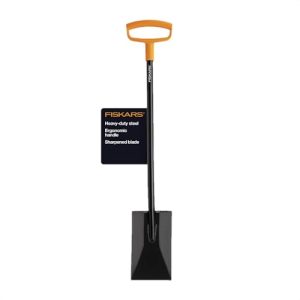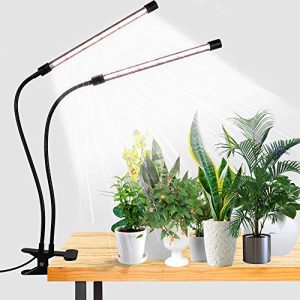Are pesky grasshoppers turning your beautiful garden into a buffet? It can be frustrating to watch your hard work disappear overnight, leaving you feeling helpless.
But don’t worry, you’re not alone. Many gardeners face the same challenge, and there’s a solution that’s easier than you might think. You’ll discover effective, eco-friendly ways to protect your plants from these munching menaces. Imagine walking through your garden without the worry of unwanted guests gnawing away at your greenery.
Ready to reclaim your garden and say goodbye to grasshoppers for good? Let’s dive in and arm you with the knowledge you need to take back control of your outdoor space.
Identifying Grasshopper Infestation
Spotting grasshopper infestation is crucial for garden protection. Look for chewed leaves and visible grasshoppers during sunny days. These signs indicate the need for effective pest control measures.
Identifying a grasshopper infestation is crucial for protecting your garden. These insects can cause significant damage, munching through leaves, stems, and even flowers. Early identification helps in managing their impact effectively.Understanding Grasshopper Behavior
Grasshoppers are most active during warm and dry seasons. They prefer open areas and sunny spots. Observing their behavior can help you spot them early. Look for signs of movement in the grass and plants.Spotting Physical Signs
Check for chewed leaves and stems in your garden. Grasshoppers leave distinct irregular holes and jagged edges. Examine the plants regularly to detect these signs promptly.Recognizing Grasshopper Sounds
Listen for the distinctive sounds they make. Grasshoppers produce chirping noises, especially during mating seasons. These sounds can alert you to their presence.Inspecting Garden Areas
Scan the ground and plants carefully. Look for grasshoppers hiding under leaves and between stems. They often camouflage well, making them hard to spot at first glance.Monitoring Population Growth
Keep track of their numbers over time. If you notice an increase, it may indicate an infestation. Regular monitoring helps in controlling their spread before it worsens.Evaluating Damage Severity
Assess the extent of plant damage in your garden. Severe damage can lead to plant death. Early evaluation helps in taking timely action to prevent further harm.Natural Predators
Natural predators like birds and frogs help control grasshopper populations in gardens. Encouraging these predators can keep gardens healthy and pest-free. Planting shrubs and adding water sources attract beneficial wildlife.
Controlling grasshoppers naturally is a sustainable approach that benefits your garden ecosystem. One effective method is to encourage natural predators to keep the grasshopper population in check. By fostering a habitat for these allies, you can reduce the need for chemical interventions, creating a healthier environment for your plants.Birds And Beneficial Insects
Birds are excellent allies in your fight against grasshoppers. Species such as sparrows, robins, and bluebirds see grasshoppers as a tasty treat. Consider installing bird feeders and birdbaths to attract these feathered friends to your garden. Planting native shrubs and trees can also provide shelter and nesting sites, encouraging birds to make your garden their home. You might be surprised how quickly a few well-placed birdhouses can create a bustling avian community. Beneficial insects like praying mantises and ladybugs are natural grasshopper predators. These insects are easy to welcome into your garden by planting a variety of flowering plants. Herbs like dill, fennel, and coriander can attract these helpful bugs. Not only do they keep pests in check, but they also add beauty and aroma to your garden space.Encouraging Wildlife
Creating a garden that invites wildlife can be as simple as leaving a few wild areas or installing a small pond. Frogs and toads, drawn by water features, can significantly reduce grasshopper numbers. Consider adding a few rocks around the pond for them to bask on during sunny days. This small effort can make a significant difference in maintaining balance in your garden ecosystem. Another way to encourage wildlife is by reducing pesticide use. Chemicals not only harm pests but also deter beneficial creatures. By opting for organic solutions and composting, you make your garden a haven for natural predators. Have you tried any of these methods in your garden? Observing the natural interplay between predators and pests can be a rewarding experience. It reminds us of the intricate balance of nature and our role in nurturing it.Physical Barriers
Physical barriers like nets or row covers can effectively prevent grasshoppers from reaching plants in your garden. These barriers offer a safe and chemical-free solution to protect crops. Ensure the edges are securely fastened to keep pests out.
Physical barriers are a robust and eco-friendly method to protect your garden from grasshoppers. These barriers create an obstacle that grasshoppers cannot easily overcome, keeping your plants safe and thriving. Let’s explore some effective physical barriers that can help you maintain a pest-free garden.Netting And Row Covers
Netting and row covers are excellent options for shielding your plants from grasshoppers. Lightweight and breathable, these covers allow sunlight and rain to nourish your plants while keeping pests out. Choose a fine mesh netting that grasshoppers cannot penetrate, and drape it over your plants. In my experience, using row covers has been a lifesaver during peak grasshopper season. Watching them bounce off the netting while my plants flourish beneath is incredibly satisfying. Have you tried this simple yet effective method?Garden Fencing
Garden fencing is another straightforward physical barrier to keep grasshoppers at bay. A well-constructed fence can deter grasshoppers and other larger pests. Ensure the fence is tall enough to prevent grasshoppers from leaping over it. Opt for materials like mesh or wire that are difficult for grasshoppers to navigate. Adding a layer of protection, such as sticky tape on the fence, can further dissuade grasshoppers from attempting to cross. Have you considered how a simple fence could transform your garden’s defense strategy?
Credit: growingorganic.com
Homemade Remedies
Homemade remedies can effectively control grasshoppers in gardens. Mix garlic and hot peppers in water to create a natural spray. This mixture deters grasshoppers while keeping plants safe.
Tired of pesky grasshoppers munching away in your garden? Homemade remedies can offer an effective and eco-friendly solution to protect your precious plants. These solutions are not only budget-friendly but also surprisingly easy to whip up with ingredients you probably have at home. Let’s dive into some practical remedies that can help you reclaim your garden from these uninvited guests.Garlic And Pepper Spray
Garlic and pepper make for a potent combination that grasshoppers find unappealing. To make this spray, blend together two bulbs of garlic with one tablespoon of crushed red pepper and a quart of water. Let this mixture steep overnight, strain it, and add a few drops of dish soap. The soap helps the mixture stick to the leaves better, enhancing its effectiveness. Spray this concoction on your plants, especially on the undersides of leaves where grasshoppers often hide. Repeat every few days or after rain. You might find it surprising how such a simple remedy can deter these garden pests so effectively.Neem Oil Solutions
Neem oil is a natural pesticide that’s safe for plants and beneficial insects. Mix two tablespoons of neem oil with a gallon of water and add a teaspoon of mild liquid soap. Shake well and pour the solution into a spray bottle. Apply it generously on your plants, making sure to cover both sides of the leaves. Neem oil works by disrupting the life cycle of grasshoppers, gradually reducing their numbers. It’s an excellent choice for those seeking a more sustainable approach to pest control. Ever thought you could use something as simple as neem oil to protect your plants? This solution not only helps in managing grasshoppers but also nourishes your garden ecosystem.Biological Controls
Employing natural predators like birds or beneficial insects helps control grasshopper populations in your garden effectively. Introducing nematodes or fungi can also reduce their numbers without harming other plants.
Biological controls offer a natural, eco-friendly way to manage grasshopper infestations in your garden. They harness the power of nature to keep these pests in check without harming the environment. Let’s explore some effective biological controls you can use.Using Nematodes
Nematodes are microscopic worms that are natural predators of many garden pests, including grasshoppers. You can purchase nematodes from garden centers or online. Simply mix them with water and spray them over your garden. These tiny creatures infiltrate the soil and attack grasshopper larvae, reducing their population. It’s like having a hidden army working tirelessly to protect your plants. Have you tried using nature’s warriors in your garden yet?Pathogenic Fungus Applications
Applying a pathogenic fungus is another effective biological control. Metarhizium anisopliae is a popular choice that specifically targets grasshoppers. Mix it with water and spray it on affected areas. This fungus infects the grasshoppers, disrupting their life cycle and ultimately killing them. It’s a fascinating way to let nature take its course in your favor. Are you ready to let fungi fight for your garden?
Credit: littlesproutslearning.co
Chemical Pesticides
Chemical pesticides effectively eliminate grasshoppers from gardens. These solutions target grasshoppers directly, reducing their population quickly. Ensure proper application to protect other beneficial insects.
Chemical pesticides offer an effective solution for managing grasshopper infestations in gardens. These products are designed to target pests while minimizing harm to plants and beneficial insects. Yet, using pesticides requires caution and knowledge. Understanding how to select and apply them properly ensures safety and effectiveness.Selecting Safe Products
Choosing the right chemical pesticide is crucial. Look for products labeled specifically for grasshoppers. Check the active ingredients for safety. Opt for pesticides with lower toxicity levels. Read the label instructions carefully. Ensure the product is suitable for your garden type.Proper Application Techniques
Correct application enhances pesticide effectiveness. Follow the instructions on the label. Apply during early morning or late afternoon. Target areas where grasshoppers congregate. Use a sprayer for even distribution. Avoid spraying on windy days. This prevents drift to non-target areas. Keep children and pets away during application. Reapply as recommended to maintain control.Maintaining Garden Health
Control grasshopper populations in your garden with natural predators like birds and beneficial insects. Introduce neem oil or insecticidal soaps to reduce their numbers effectively. Regular monitoring helps maintain garden health and prevent damage.
Maintaining Garden Health is crucial when dealing with pesky grasshoppers that threaten your beloved plants. Keeping your garden in optimal condition is not just about removing pests but ensuring your plants thrive in a balanced ecosystem. With simple practices, you can safeguard your garden’s health and keep grasshoppers at bay.Regular Monitoring
Regularly monitoring your garden is like giving it a routine health check-up. By frequently inspecting your plants, you can spot early signs of grasshopper infestations before they become unmanageable. Use a flashlight to look under leaves and around plant bases, especially during early mornings or late afternoons when grasshoppers are more active. Consider keeping a garden journal to note patterns or increases in grasshopper activity. This proactive approach allows you to act swiftly and reduce the damage they cause.Crop Rotation Benefits
Crop rotation is not just for large farms; it can be a game-changer for small gardens too. By changing the types of crops you grow in specific areas each season, you confuse and deter grasshoppers. For example, if you notice grasshoppers have a preference for your lettuce, plant it in a different spot next year. This simple switch disrupts their breeding and feeding patterns, making it harder for them to establish a stronghold in your garden. Have you tried rotating crops before? You might be surprised at how much healthier your garden can become with this strategy. By focusing on these practical steps, you’re not only addressing the grasshopper problem but enhancing the overall vitality of your garden.Preventative Measures
Natural predators like birds and beneficial insects can control grasshopper populations. Planting garlic or cilantro deters them effectively. Introduce nematodes to soil for long-term prevention.
Preventative measures play a crucial role in controlling grasshopper infestations. By implementing effective strategies, gardeners can protect their plants from damage. This section explores key techniques to deter grasshoppers before they invade the garden.Plant Diversification
Diversifying plant species can disrupt grasshopper feeding patterns. Grasshoppers tend to focus on specific plants they favor. By introducing a variety of plants, gardeners can confuse these pests. Some plants naturally repel grasshoppers, such as calendula or cilantro. Incorporating these into the garden mix enhances defense. Different plant heights and textures can create physical barriers. Taller plants can block access to smaller, vulnerable plants. Mixing flowering and leafy plants can also deter grasshoppers. This diversity helps maintain a healthy ecosystem, reducing pest numbers.Seasonal Garden Planning
Timing your planting can influence grasshopper activity. Planting early in the season can avoid peak grasshopper periods. Young plants are more susceptible to damage, so mature plants have a better chance against pests. Consider crop rotation to minimize grasshopper habitats. Changing planting locations annually disrupts their lifecycle. This method reduces the chance for grasshopper eggs to hatch in familiar spots. Using natural predators can also aid in grasshopper control. Birds and beneficial insects can keep grasshopper populations in check. Encourage these allies by including birdhouses or insect-attracting plants in your garden plan.
Credit: www.facebook.com
Frequently Asked Questions
How To Kill Grasshoppers Without Killing Plants?
Use neem oil or diatomaceous earth to target grasshoppers. Introduce natural predators like birds or praying mantises. Handpick grasshoppers in the early morning when they’re less active. Plant deterrent herbs like cilantro or basil to repel them. These methods protect plants while effectively controlling grasshopper populations.
What Is The Fastest Way To Kill A Grasshopper?
Use insecticidal soap or neem oil to quickly kill grasshoppers. Apply directly to the insects for effective results. Ensure thorough coverage for maximum efficacy. Always follow product instructions for safety and effectiveness.
Does Vinegar Kill Grasshoppers?
Vinegar can repel grasshoppers due to its strong smell and acidity. It disrupts their sense of smell and deters them. To use, mix vinegar with water and spray on plants. It’s an eco-friendly solution but may not fully eliminate grasshoppers.
Always test a small area first to avoid plant damage.
How Long Will A Grasshopper Infestation Last?
A grasshopper infestation can last several weeks to a few months. Duration depends on weather, food availability, and control measures. Effective management and favorable conditions can reduce infestation time. Regular monitoring helps in early detection and control.
Conclusion
Killing grasshoppers requires patience and the right approach. Try natural methods first. Neem oil works well. Encourage birds and beneficial insects. They help control grasshopper numbers. Regular monitoring is crucial. It keeps infestations in check. Organic pesticides can be a last resort.
Always follow product instructions. Protect your plants and garden ecosystem. A balanced approach ensures long-term success. Remember, consistency is key. Stay vigilant and proactive. Grasshopper control takes time. But with the right strategies, you can maintain a healthy garden. Enjoy your thriving, pest-free garden.
Your efforts will pay off. Happy gardening!




